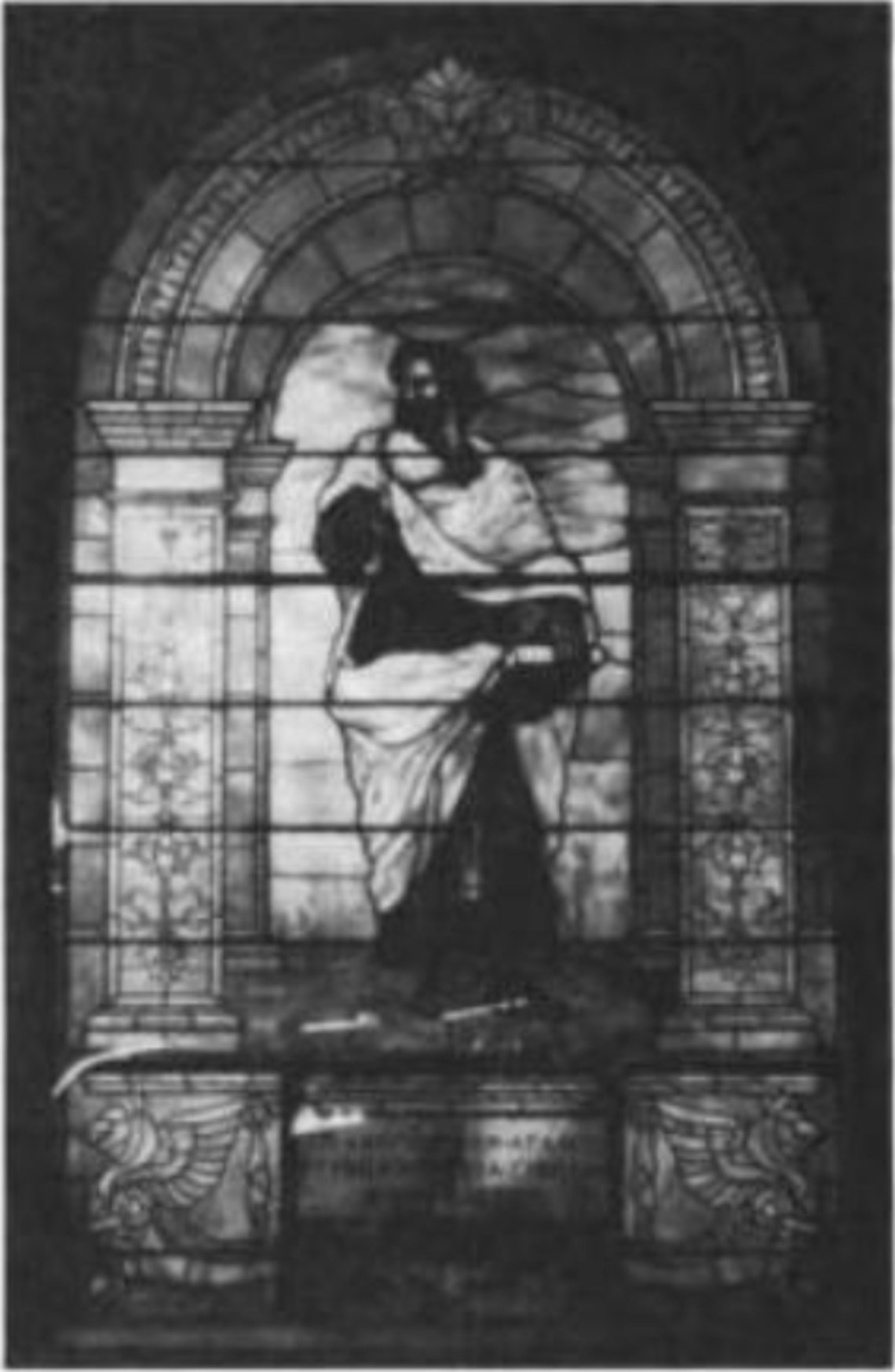
Once upon a time there was a large stained glass window gracing the stairwell of Prospect House. It had been installed when Woodrow Wilson was Princeton’s president. Now the window decorates a restaurant in Mt. Holly, New Jersey, and the story of its journey is a puzzle.
While working on a book about Wilson’s first wife, Ellen Axson, historian Frances Saunders came across a reference to the window in one of Ellen’s letters. When she investigated, she found the window had been replaced with clear glass during President Dodd’s tenure. The last anyone remembered, it was crated and stored in the basement recesses of the Chapel, but Saunders’ search failed to locate it.
“I spent about a week trying to trace it and decided to give up,” she says. Then she saw a newspaper story reporting that “Charley’s Other Brother,” a branch of a local restaurant chain, had a stained glass window that once belonged to Princeton University. Saunders was off to Mt. Holly.
The window, which measures about 6 by 20 feet, shows a bearded figure holding a book – Aristotle’s Ethics – and bears a Greek inscription that translates: “Human good is the activity of the soul.” Mrs. Dodds has verified that it is indeed the window that used to adorn Prospect, and the university is investigating how it got away, since there seems to be no record of a sale. The restaurant owner purchased it in 1970 from an antiques dealer in Pennsylvania.
Saunders says Ellen Wilson was an artist and, according to a daughter, she suggested the design, which is based on a central figure in Raphael’s fresco, The School of Athens. The window may have been executed bey Tiffany. Ellen mentions it in a letter written May 27, 1907, and Saunders speculates that since Wilson was then in the midst of his battle to reform the clubs, his wife’s design may have supplied visible moral support.
This was originally published in the April 20, 1981 issue of PAW.










0 Responses